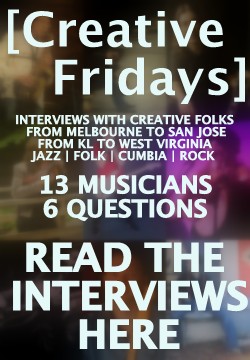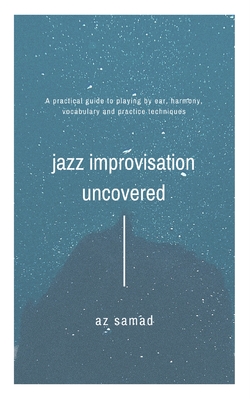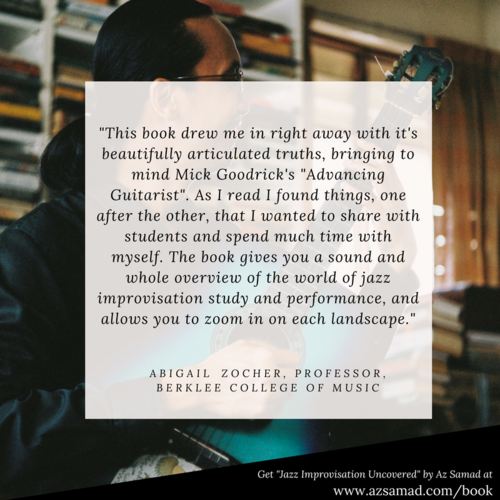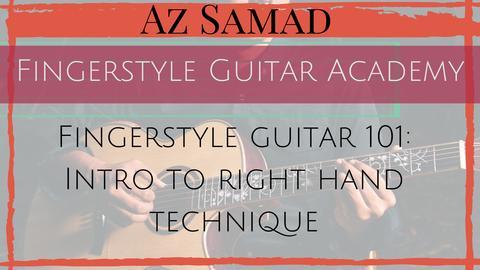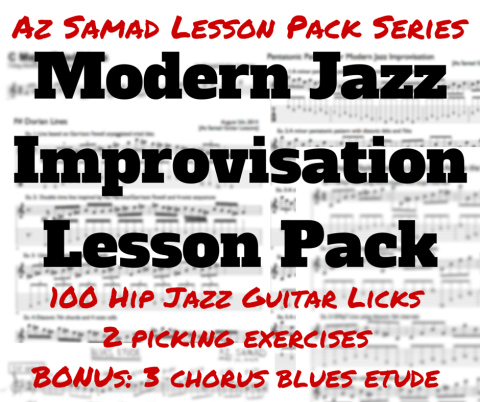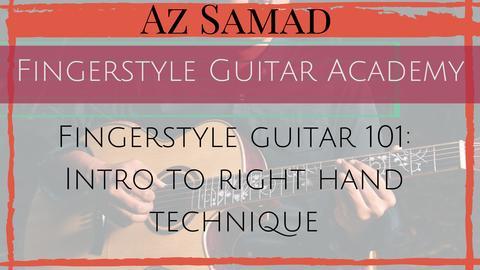Jazz Improvisation Uncovered: My First Book!
 Tuesday, October 3, 2017 at 12:24PM
Tuesday, October 3, 2017 at 12:24PM
[What People Have Been Saying About The Book]
===

Just received some kind words from Berklee College of Music Associate Professor Ben Sher about my new book, "Jazz Improvisation Uncovered". Ben taught me so much about jazz, Brazilian guitar styles and improvisation during my time at Berklee.
Thank you Ben! :)
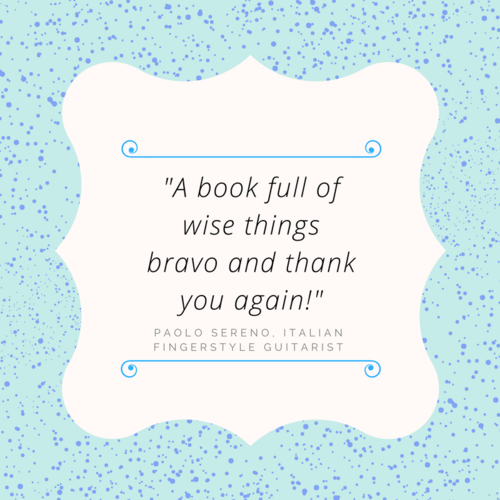
Paolo Sereno, Italian Fingerstyle Guitarist

"Wow! I can't say I've ever come across a book of this size packed with so much useful information. Az minces no words, and his breadth of experience and understanding is immediately evident. It's all laid out in a clear and concise manner. I would recommend this to anyone, at any level, on any instrument."
Taylor Roberts, 7-String Jazz Guitarist & Benedetto Artist
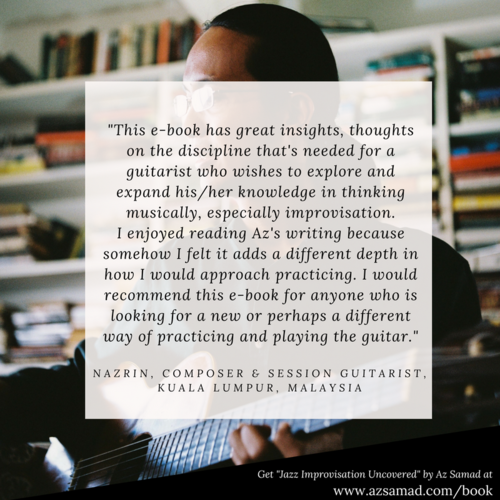
I enjoyed reading Az's writing because somehow I felt it adds a different depth in how I would approach practicing. I would recommend this e-book for anyone who is looking for a new or perhaps a different way of practicing and playing the guitar."
Nazrin, Composer & Session Guitarist, Kuala Lumpur, Malaysia

"Reading Az Samad’s 'Jazz Improvisation Uncovered’ gives great insight by pinpointing some of the simple mistakes very often done during improvisation and practise routine. In this e-book, Az Samad emphasises on following a systematic approach on becoming an effective jazz player and also to understand the jazz methodology in general. Recommended, no matter what instrument you play.”
Malcom Lapok, Pianist
===
"An excellent book for anyone searching to improve their jazz improvisation skill, and also abilities to play by ears. Lots of insightful information!"
Seng Jinn, Singapore
===

"Az Samad's first book is a comprehensive theoretical framework for every musician's mind. A bite sized piece of secret wisdom produced by a knowledged and hardened professional.
Every topic discussed was produced and mastered like a vinyl album, with each song addressing every dissonant question with a harmonious answer.
On a personal note.
Post consumption of these materials written, breaks and spaces within my mind as a musician had been filled in with knowledgeable riffs and passages.
Now my disembodied phrases and melodies have a flow and continuity, like how a proper musician should learn to think, express and improvise."
Don Renkai, Malacca, Malaysia
===

"Nice book Az, this is exactly what I wanted to read when I started learning Jazz, I wish I could read this book earlier. I love those answers, I love those quotes, super inspiring! Congrats, Az!"
Leo Quyuan, China
===
Book review by Afiq PB
"After reading this E-Book I’ve learned a lot using the right words especially being a part time guitar instructor and music producer. I’ve always stuck using the right words or sentences to teach my students and clients in studio.
I) Playing By Ear
It is really important for some of my clients that I produce. I’ve worked with some musicians don’t really know about theory, harmony and etc. It’s really important to sit down and record yourself.
From there, there will ask me
1) What chord is this?
2) How to improvise this solo?
3) Form of songs
4) Borrowed Chord and modal interchange
5) How to apply scales from this chord progressions
By reading this section, I can use the right words or sentences to make it easy for my clients to understand how important to learn theory.
II) Harmony and Chord Progressions
A lot of my clients don’t really know whether they’re playing the note as tensions or suspension. From there we can use some cool voicing technique like Drop 2,3 and 4. I have to refresh from this and make it natural to say it out.
This will bring the interest to add more texture to the song and beautifully arrange at the right section of the song.
III) Vocabulary, Melodies, Rhythms and Grooves
For me if the songs deliver, it means you learn how to speak well to the listener. How it is really important to use this as structure to compose a piece or song. These are ingredients to keep writing song and build more momentum. Yes, sometimes you need some space to be alone to compose beautiful melody, tight rhythm and simple groove.
It’s about the right time to put everything in places. We think some pop songs are easy but if you break it down with all these mentions above ; Vocabulary, Melodies, Rhythms and Grooves. This will make them not to syok sendiri hahaha.
They will think write only one song or a simple chord progression will do justice in able to sell their artwork to radio station. It is important to write more demos and songs.
IV) How to Practice
When I read these five things to improve as a musician, I will take note and keep that in mind so I don’t lose momentum. Thank you so much, It’s a great reminder and make it more organize with my practice routine.
Conclusion
I know this a jazz improvisation but somehow it is related to me because I’m a serious musician. The topics are important a guide playing by ear, harmony and practice techniques
I’ve learnt a lot knowing some basics words and sentences. It will be useful for me when I’m working with great musicians. The directions are clear and I will keep this as a reference. I can break it down into sections and work on it slowly.
There is no shortcut and you need to be patient to be a serious musician.
Brilliant, Amazing and Mind Blowing
Thank you uncle Az!"
Afiq PB (Indie Music Producer and Guitarist), Kuala Lumpur, Malaysia.
====
[Jazz Improvisation Uncovered Video Playlist]
This is a series of videos demonstrating and explaining concepts from my book, "Jazz Improvisation Uncovered".
 Permalink tagged
Permalink tagged  az samad,
az samad,  e book,
e book,  jazz guitar,
jazz guitar,  jazz improvisation
jazz improvisation 
